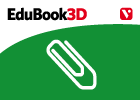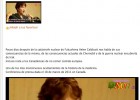Cargando...
Recursos educativos
-
Nivel educativo
-
Competencias
-
Tipología
-
Idioma
-
Tipo de medio
-
Tipo de actividad
-
Destinatarios
-
Tipo de audiencia
-
Creador
Lo más buscado
- Francés-Lengua extranjera
- Funciones
- Letras para recortar
- Alimentación saludable en primero
- Recursos 2.0
- Actividades de repaso para segundo
- Repaso de fracciones
- Actividades de repaso para sexto
- Rios de Asia
- Alimentación saludable en sala 5 años
- Múltiplos de 6
- Letras N
- Imprimir material primero
- Actividades didacticas para tercero
- Percepción visual
-

Learn. Measure your heart and breathing rates
EduBook Organización
- 3536 visitas
What do we do? Our circulatory and respiratory systems are constantly adapting to our body's needs. You can test this with the following experiment. While you are resting, check your pulse and count…
-

Introduction - Matter: Mass, Volume and Density
EduBook Organización
- 3491 visitas
All objects are made up of matter. As a consequence of this, they have mass, occupy a certain volume and have a certain density. Mass, volume and density are magnitudes. This means they have values…
-

Before you read 01 - How the Leopard Got His Spots (part one)
EduBook Organización
- 3234 visitas
Read the text and complete the information below. Giraffes Giraffes are very tall animals. They are light brown with a lot of dark brown patches on their body. They have long legs and a very long neck.…
-

Complete - Remember
EduBook Organización
- 3405 visitas
Complete: There are two types of machines: machines and machines. Levers, wheels, ramps and are examples of simple machines. Compound machines are made up of two or more machines working together.…
-

Blood circulation (II)
EduBook Organización
- 3408 visitas
The heart The heart is the organ that pumps blood to all the cells in our body. It is about the size of a closed fist. Its walls are made of muscle tissue. The heart contains four chambers: The two top…
-

-

How we breathe in places with no air
EduBook Organización
- 3293 visitas
We need air to breathe Humans and other animals that live on land need air to live. When we breathe, we take oxygen from the air. With this oxygen and with the food we eat, our body has the energy it…
-

Answer. Unicellular and multicellular organisms
EduBook Organización
- 3296 visitas
Remember what you have studied in this section and answer the questions: What are organisms made up of a single cell called? How do they reproduce? What do we call living things that are made up of many…
-

Adrenaline prepares for action
EduBook Organización
- 3307 visitas
In situations of danger or fear, the adrenal glands produce a hormone called adrenaline. This prepares the body for action, like running or hiding. This is called the fight or flight response.…
-

Video: Nuclear radiations in 3Mile Island, Chernobyl and Fukushima
Educatube Organización
- 7275 visitas
In this 11 minute video (with Spanish subtitles) Helen Caldicott (Nobel Prize) explains the consequences of recent nuclear catastrophes on the human body. We can listen to specific scientific vocabulary…
Te estamos redirigiendo a la ficha del libro...












